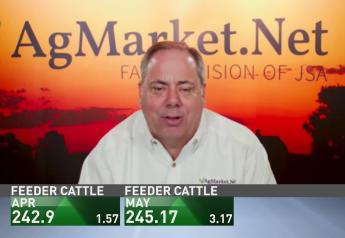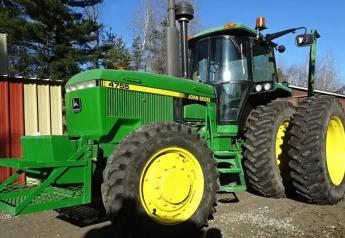Jerry Gulke: Wet Weather Trumps Acres

The Acreage report lit up the grain markets last week, with USDA calling for lower corn and soybean total acres in 2021. Unfortunately, those market fireworks have fizzled.
September corn prices were down 64.25¢, and December corn prices were down 64.25¢, for the week ending July 9. August soybean prices were down 55¢, while November soybean prices were down 70.75¢.
“We knew last Friday that going into the Fourth of July there was rain in the forecast,” says Jerry Gulke, president of the Gulke Group. “It rained in a lot of places that were dry, and we evaporated the weather premium out of the prices.”
With favorable precipitation, some of the areas of bad crops have gotten smaller and areas with good crops have expanded.
“We do have heat coming back, but we also have rain coming this weekend and next week,” Gulke says. “My fear in the very beginning was we'd plant enough acres and get enough yield where we had too much of everything. I don't think we're quite there yet. But the market is sure nervous, and we broke some major trendlines.”
All three classes for wheat were down this week: Chicago wheat prices were down 38.25¢, Minneapolis wheat prices were down 25.5¢ and Kansas City wheat prices were down 25.75¢.
“We knew this week market was getting hurt in the Northern Plains,” Gulke says. “Premium wheat will be in short supply. Monday is the last chance for USDA to adjust the yield for that. They're probably not going to reflect what they totally think is happening. Whatever they say on Monday will probably not be enough.”
Overall, Gulke says, the price trends are indicative of crop health and the weather ahead.
“You can see corn and wheat have taken a pretty good hit, but soybeans are kind of hanging in there because August is coming yet and that's when will really going to make the difference,” he says. “Will all that heat come back, and we have poor pod filling for soybeans?”
Gulke also reminds that even though prices are drifting lower, they are still at relatively high prices—almost $2 more than a few years ago.
The Gulke Group Summer Conference is set for July 14-16 at the Westin Chicago Lombard in Lombard, Ill. To learn more, visit GulkeGroup.com.
Check the latest market prices in AgWeb's Commodity Markets Center.
Jerry Gulke farms in Illinois and North Dakota. He is president of Gulke Group. Disclaimer: There is substantial risk of loss in trading futures or options, and each investor and trader must consider whether this is a suitable investment. There is no guarantee the advice we give will result in profitable trades. Past performance is not indicative of future results.







